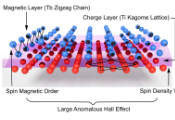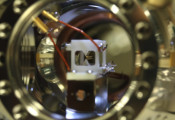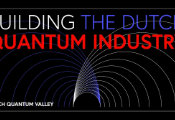When Secure Isn’t Secure Enough: The Urgent Need for QKD in Protecting Critical Infrastructure
Cybersecurity in critical infrastructure goes beyond just protecting data communication; it’s about safeguarding the very systems that keep our world functioning smoothly. Recently, a groundbreaking study by scientists from Technion, Tel Aviv University, and the Israel National Cyber Directorate revealed a significant vulnerability in industrial control systems. By gaining access to the communication link of a Siemens controller, these researchers demonstrated how easily such critical systems can be compromised. This exposure highlights a pressing need for the most advanced security measures like Quantum Key Distribution (QKD) to protect these vital communication links from potentially devastating attacks.
The Pivotal Role of Industrial Controllers
Industrial controllers are the unsung heroes of modern infrastructure, quietly orchestrating a vast array of essential functions across various sectors. These devices manage the heartbeat of our infrastructure—regulating electricity in power grids, overseeing the purification processes in water treatment plants, ensuring the safe distribution of gas, and even orchestrating the intricate operations of transportation networks and manufacturing facilities. Essentially, they are integral to everything from power generation and water safety to the smooth running of factories that produce everything from consumer goods to high-tech components. Given their central role, any breach in the security of these controllers can have far-reaching consequences, affecting millions of lives and causing extensive economic damage.
The Threat of Compromised Communication Links
The recent research exposed a chilling vulnerability: attackers who gain control of the communication link to an industrial controller can cause significant disruptions. Imagine a scenario where malicious actors manipulate the communication channels of a power grid controller, leading to widespread blackouts or equipment malfunctions. In a water treatment facility, tampering with controllers could result in contaminated drinking water. In gas networks, unauthorized access could trigger dangerous leaks, and in transportation systems, it could cause serious disruptions or accidents. Such disruptions not only jeopardize public safety but also lead to considerable financial losses and operational chaos.
Quantum Key Distribution (QKD) as a Game-Changer
Quantum Key Distribution (QKD) offers a robust defense against these vulnerabilities by securing the crucial communication links that control industrial systems. Utilizing the principles of quantum mechanics, QKD ensures that encryption keys are distributed in the most secure manner possible, protecting them from unauthorized access. One of the standout features of QKD is its ability to detect any attempts at interception or tampering. If an intrusion is detected, QKD can halt or modify the key generation process, enabling swift intervention to prevent any potential damage. This real-time detection and response capability makes QKD an essential solution for maintaining the integrity and security of critical communication channels.
Unlike traditional encryption methods, which may eventually be compromised by advancing technologies such as quantum computing, QKD is built to withstand any emerging threats. Its design inherently protects against the potential vulnerabilities posed by future technological developments, including quantum computers. By incorporating QKD into the security frameworks of critical infrastructure, we establish a formidable defense against cyberattacks, safeguarding the integrity and continuity of essential services.
Conclusion
The recent findings from the Technion and its partners highlight a critical weakness in the security of communication links used by industrial controllers. As these controllers are central to the functioning of our essential infrastructure, safeguarding their communication channels is imperative. Quantum Key Distribution (QKD) offers an advanced and future-proof solution to this challenge, ensuring that communication links remain secure and resilient against evolving cyber threats. By adopting QKD, we can significantly enhance the protection of our critical infrastructure, securing the systems that underpin our modern world and ensuring their reliable operation amidst increasing cyber risks.




































